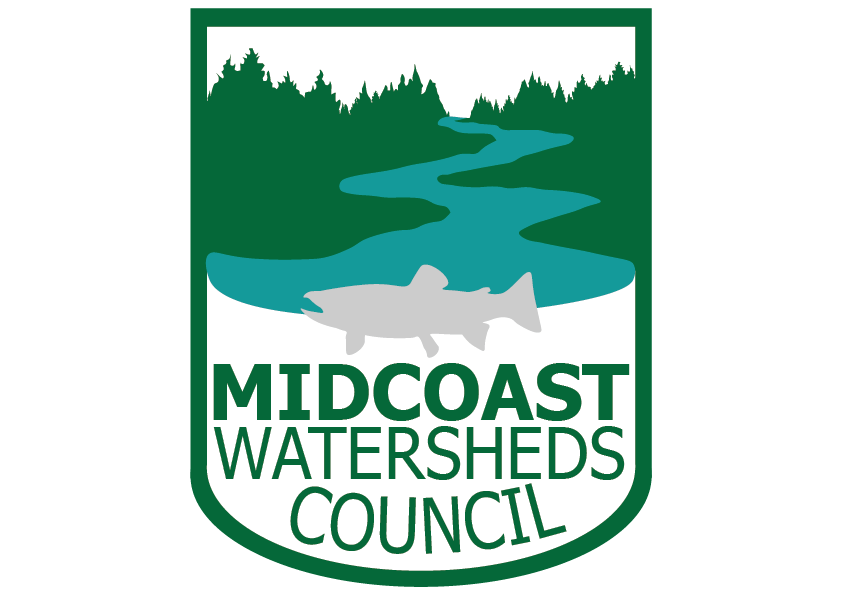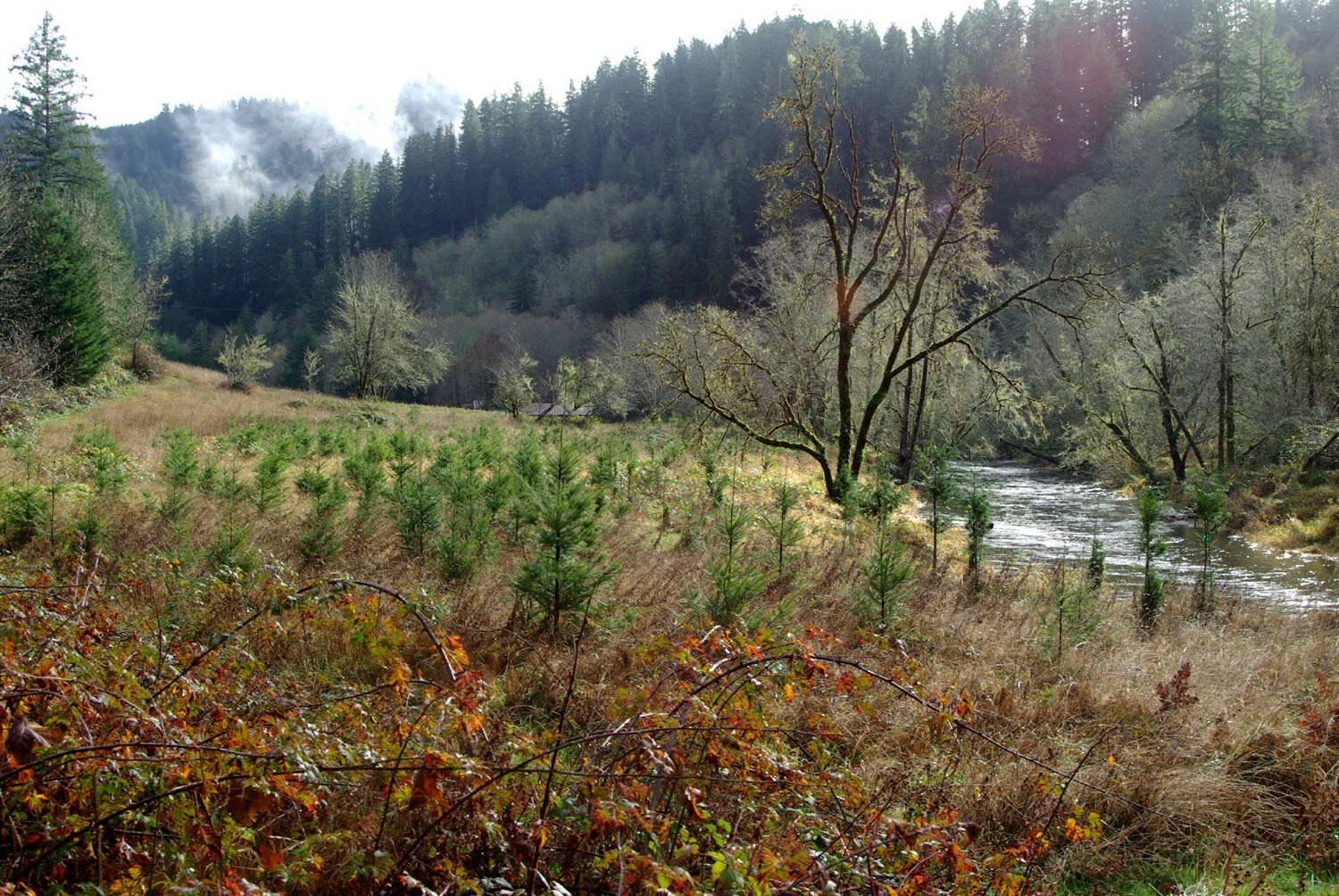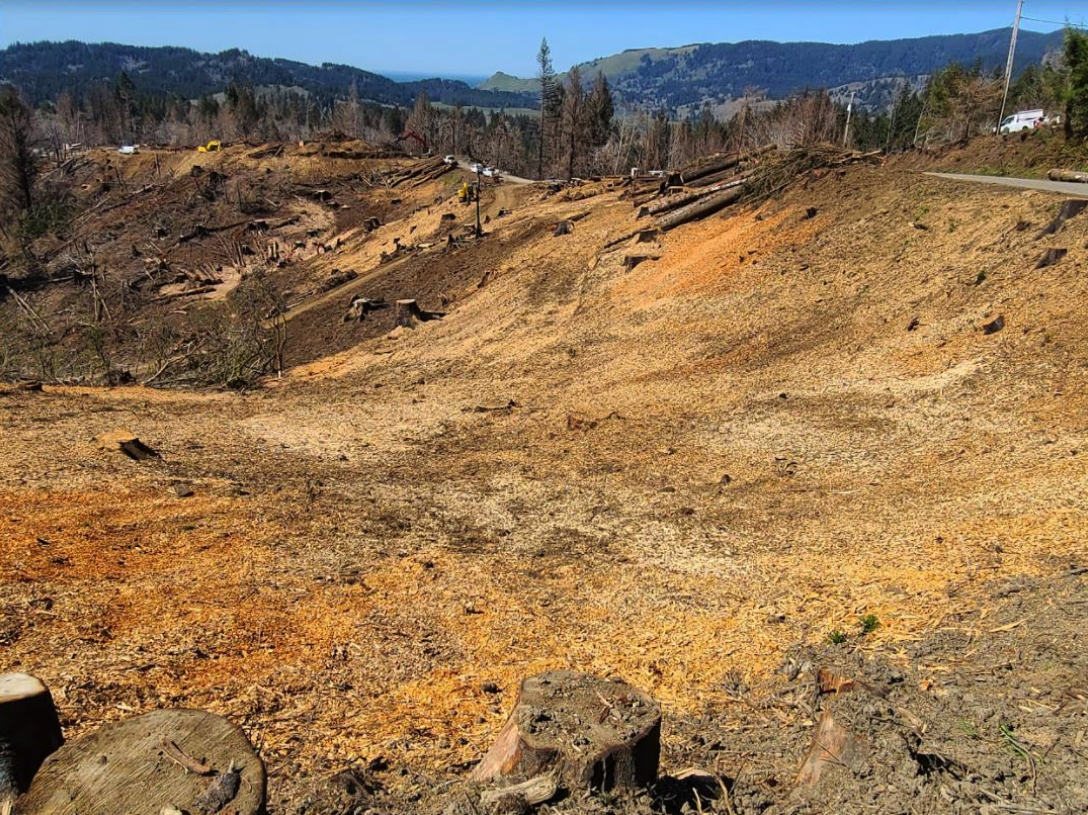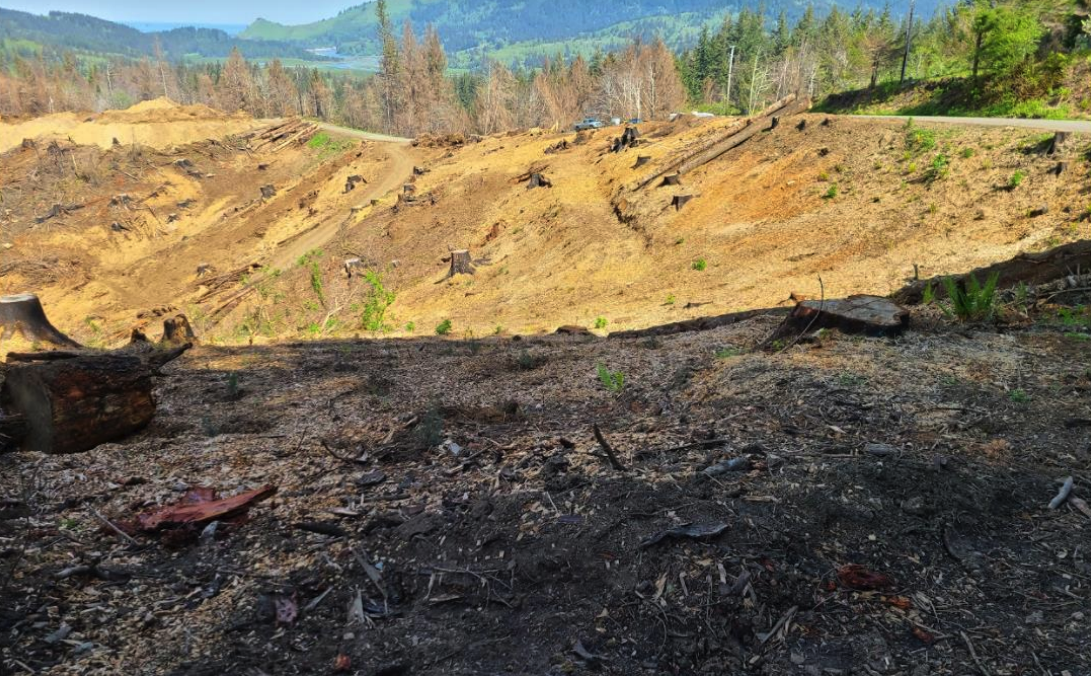In September, 2020, the Echo Mountain Fires burned through the town of Otis, Oregon and the surrounding area. As a result, about 300 homes were destroyed and the natural landscape suffered from hazardous materials such as ash, soil instability, and invasive plants. Removal of hazardous materials and standing dead trees after the disaster was accomplished by FEMA, EPA, ODOT, and Pacific Corps.
To stabilize soils, manage invasive vegetation, and provide long-term protection for water systems, the Salmon Drift Watershed Council, now incorporated into MidCoast Watersheds Council (MCWC), and partners did plantings on 18 acres in the Echo Mountain Fire zone and salvaged logs for future restoration projects.
Restoration site prior to planting taken in April, 2021 (left) and after planting taken in May, 2021 (right).
Example of fire-damaged trees salvaged for restoration projects.
Sites were selected for their vulnerability to erosion and water system contamination in the context of drinking sources and aquatic species health.
Continued in 2022 and 2023 by MCWC and partners, further riparian and upland plantings, and weeding occurred to reduce erosion and water system contamination. The project is still ongoing and has prioritized site preparation and invasive species management so far.
Project partners include Lincoln Soil and Water Conservation District, the Natural Resources Conservation Service, the Confederated Tribes of the Siletz Indians, and Landscaping with Love.




